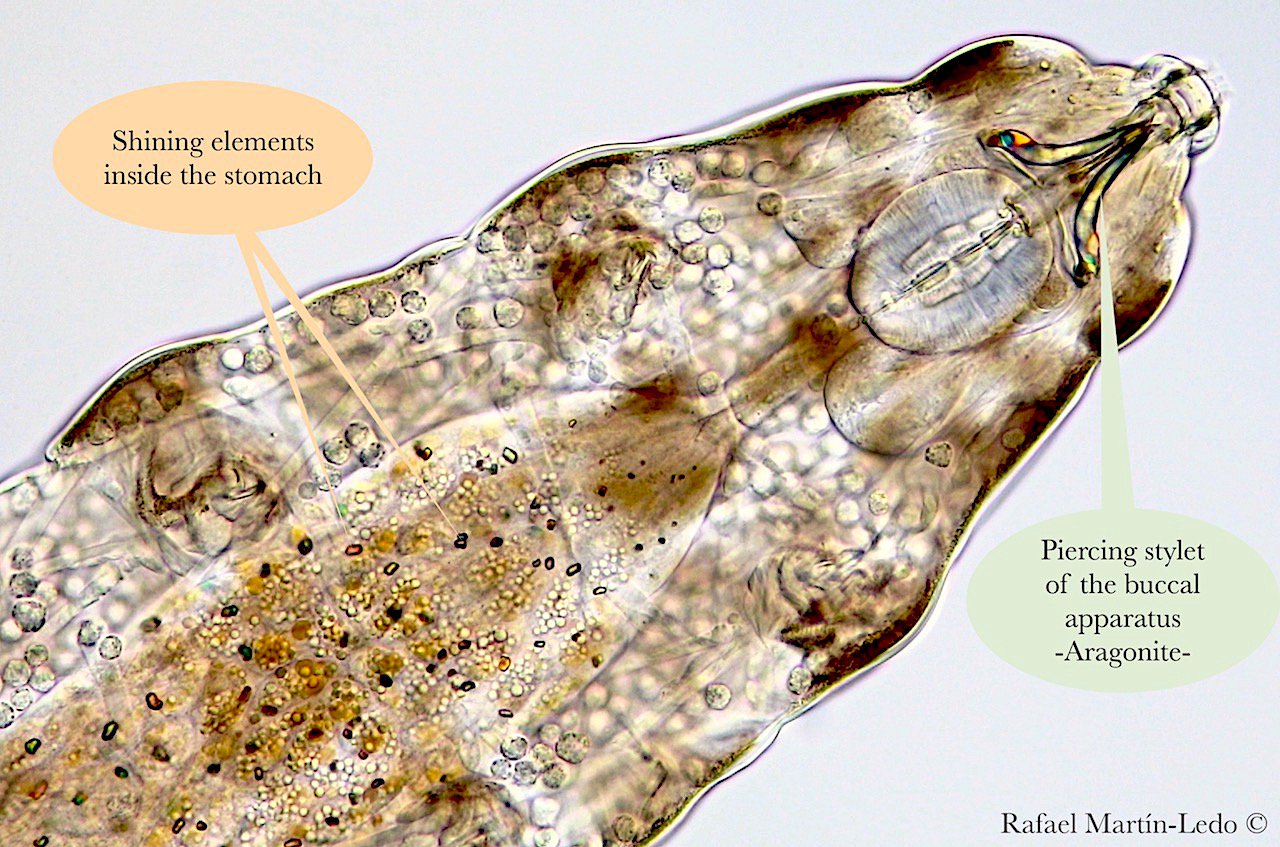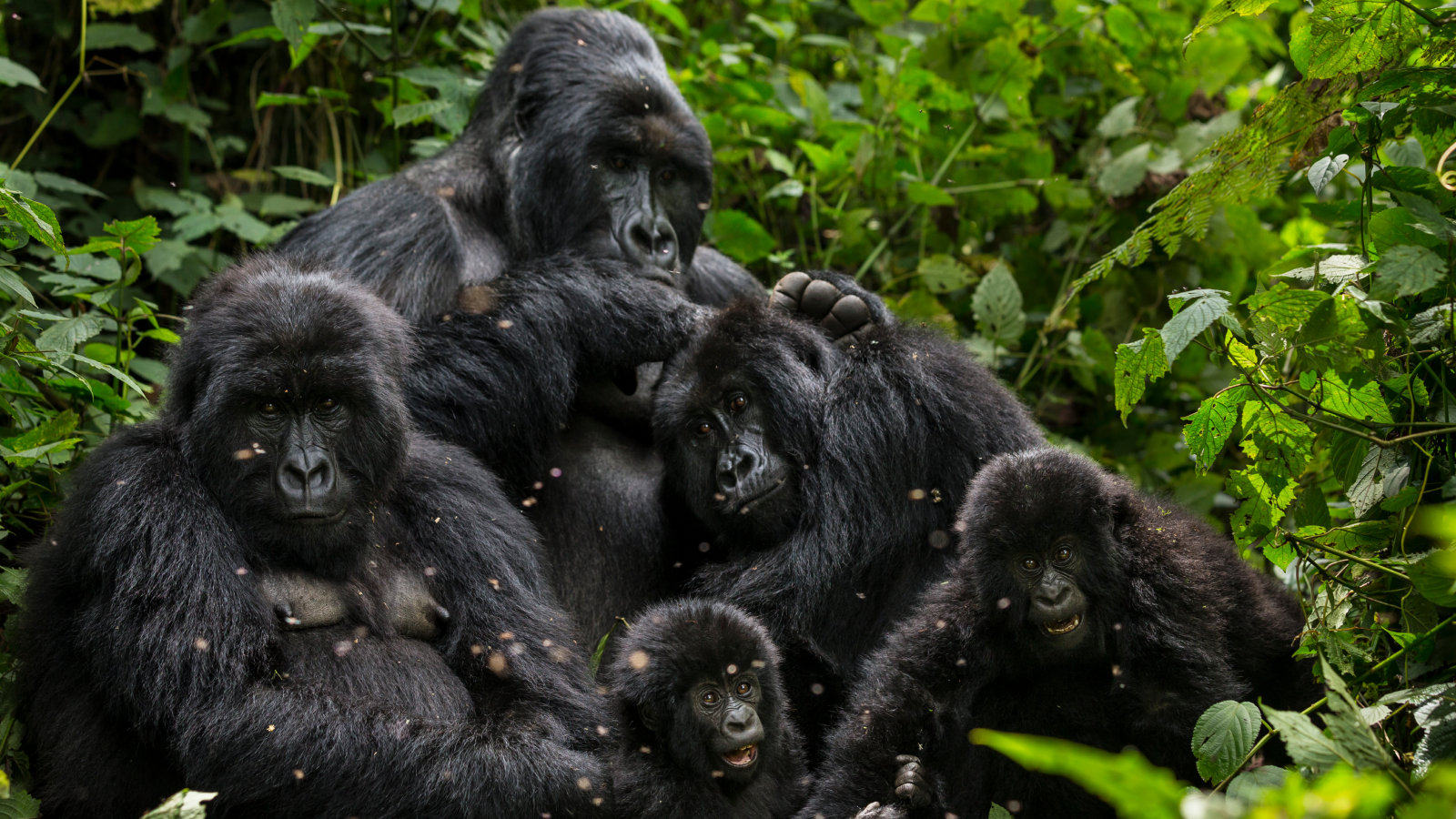Mysterious, Glowing Tardigrade May Have Swallowed Part of Its Own Mouth
There are few things more wondrous than watching a tardigrade wriggle under a microscope with something weird in its belly — be it an absurdly large poo, a clutch of spaghetti-topped eggs or, as shown in a remarkable video posted to Twitter this week, a mysterious mother lode of glowing crystals.
Tardigrades — more whimsically known as water bears or moss piglets — are near-microscopic, piggly-wiggly invertebrates found on mosses and in other wet places around the world. In the brief Twitter video, biologist Rafael Martín-Ledo studied a tardigrade from the Saja river in northern Spain, using an imaging technique called phase contrast microscopy, which brightens structures that scatter higher amounts of light. The technique highlighted tricky-to-see structures, like the tardigrade's stylets — a pair of hard, food-piercing tools flanking the piglet's mouth (seen on the left side of the video) — but also revealed the surprising contents of the tardigrade's tummy. Glittering like a tiny galaxy, chunks of strange crystals filled the water bear's stomach. [8 Reasons Why We Love Tardigrades]
What are they, and how did they get there? Nobody knows. But according to Martín-Ledo — a high school science teacher in Santander, Spain, and co-author of numerous studies on marine microfauna — those gut crystals could be bits of the tardigrade's own mouth.
"The tardigrade's two stylets are made of aragonite," a common mineral made of carbon and calcium, Martín-Ledo told Live Science. "So, when I saw crystal-like elements inside its belly, I supposed they must be pieces of aragonite crystals that it swallowed."
This is just a hunch, Martín-Ledo noted. But, considering tardigrades molt and regrow their stylets from time to time, it's plausible that some bits might end up in the animals' bellies.
And, if it turns out that tardigrades do, occasionally, swallow bits of their own mouths, it would hardly be the weirdest thing about them. Structurally, tardigrades are little more than eight-legged heads with a mouth and an anus, and yet they are one of the animal kingdom's most resilient champions, capable of withstanding extreme heat, bone-chilling cold and blasts of radiation that would kill most other creatures. Some have even come-to after being frozen solid for 30 years.
With more than 1,000 known species of these puny, pudgy superheroes discovered so far, it's fair to say that Earth may be the tardigrade's world, and we're just living in it. If water bears want to eat their own faces from time to time, who are we to stop them?
Get the world’s most fascinating discoveries delivered straight to your inbox.
- In Photos: The World's Freakiest-Looking Animals
- 9 Times Nature Was Totes Adorbs in 2018
- Photos: The World's Cutest Baby Animals
Originally published on Live Science.

Brandon is the space / physics editor at Live Science. With more than 20 years of editorial experience, his writing has appeared in The Washington Post, Reader's Digest, CBS.com, the Richard Dawkins Foundation website and other outlets. He holds a bachelor's degree in creative writing from the University of Arizona, with minors in journalism and media arts. His interests include black holes, asteroids and comets, and the search for extraterrestrial life.



